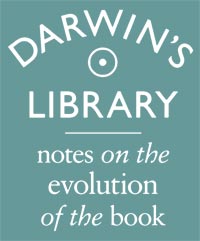Some notes on notes: part two
In this follow-up to my previous post on notes and citations for ebooks, I take a look at some of the barriers to creating a workable, cross-platform system – some business-related and some technical – and how they may be overcome.

Living on an island
Rather than sign up to an open bookmarking standard, the likes of Amazon may prefer to stick to proprietary systems in the hope of making their platform (in this case Kindle) more attractive than the competition. In a world where some platforms don’t support annotation at all, a good proprietary solution is indeed a selling point, another reason for readers to spend their time and money on one island in the digital ecosystem rather than another.
This could work for publishers too. Imagine a classics platform with a robust, capable and easy to use notes and citations system built in. That’s the kind of added value that could help Penguin, for example, retain its academic market despite the availability of many classics as free digital editions.
The hope here is twofold: first, that notes and bookmarking of any sort become so commonplace that their proprietary value is eroded; second, that there is enough momentum behind Open Bookmarks or something similar that proprietary systems that don’t play nicely with the common standard will become a disadvantage.1
A Pirates’ Charter?
The ability to take text from a book and use it externally will no doubt worry some publishers. That’s why copy and paste functionality is disabled so often in ebooks. A couple of points on this:
1. Telling publishers that DRM is counterproductive and piracy can be good for business isn’t the answer. That’s a philosophical argument that will run and run. The main practical consideration should be: Does this make copying your book any easier, or make it appear more legitimate?2 By imposing a reasonable restriction on the size of an individual clipping, it should be easy to answer no to this question, without seriously impeding legitimate annotation activity. If there’s a less laborious method open to the determined or casual copyright infringer (and there always will be) piracy should not be an issue here.
2. Shared notes are an opportunity rather than a threat. Clicking on a passage shared by another reader should take me to that passage in my own copy of the text – if I don’t already own a copy, the link could give me options for purchasing one.3
Editions and addition
For that to work, there has to be compatibility between different editions. If you bought a book on iBooks and I own it on Kindle, we should still be able to use each other’s notes with our own editions and, as far as possible, neither of us should be presented with links to purchase a book for one platform that we already own on another.
For citations, this ability to locate a referenced passage in different iterations of the same book would be an improvement on the current ISBN and page-number system, which only works for a single print edition.
Since page numbers are already meaningless in reflowing text, it ought to be (relatively) straightforward to devise a common system for pinpointing a passage in what essentially are differently-wrapped packages of the same text – something like the paragraph-linking system used by the New York Times for example.
Things get more tricky when the text changes though. In print, this happens only with a new edition, which comes with its own ISBN and pagination, and would be cited independently of previous editions. But digital offers the possibility of a more fluid approach to changing the text, with updates and corrections feeding through as and when author and publisher want to make them. In that scenario, place identifiers based solely on numbers – either a paragraph/sentence number or a percentage of the text – would quickly break down. A system that combined a text search with a percentage, with an algorithm that allowed some leeway, would be more robust, but would eventually break under the weight of heavy revision. Many books will never be heavily revised of course, but it isn’t hard to see the possibility of some taking on a mutable, evolving nature akin to a Wikipedia article. James Bridle has written about the historiographic importance of the edit history in Wikipedia and it strikes me that a similar system would prove valuable for ebooks. Clearly such a project presents many potential challenges and benefits beyond the scope of this essay, but one thing it would offer is a way for notes and citations not only to remain intact as a book gets updated, but also for them to be viewed within the context of that process of change.
- That’s not to say that there will be no room for proprietary systems. To be effective, a good common standard should be as simple as possible, and would therefore leave room for additional features to be built on top of it. [↩]
- As Mike Shatzkin points out, publishers use DRM to deter casual sharing, rather than believing it prevents piracy altogethr. Anything the publisher or retailer does to facilitate casual sharing will legitimise it, and is therefore a cause for concern. The ability to copy and paste the the entire text in one go would fall into that category. [↩]
- This would likely be via a third-party extension of some sort, rather than baked into the core bookmarking system. [↩]


[...] page edge metaphor in iBooks for example [↩]Some Notes on Notes Part One & Part Two [↩]assuming, that is, that Amazon hasn’t found some ingenious way to patent electronic use [...]